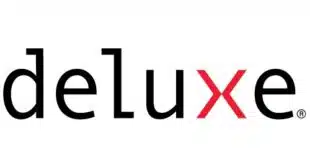Want to know where the chargebacks are coming from? Chargebacks911 has ranked the top five U.S. cities in terms of chargeback rates, placing a ZIP code in Show Low, Ariz., with a 2.2% rate, at the top.
The study of 500,000 chargebacks of e-commerce transactions made in 2013 indicates the percentage of disputed transactions, long a troublesome element for merchants. Chargebacks can happen for a number of reasons, including identity theft, pricing errors, or failure to receive a good or service as specified. They also occur in cases of so-called friendly fraud, where consumers authorize a purchase and receive their goods from online merchants but then enter a chargeback hoping to get an unwarranted refund. Clearwater, Fla.-based Chargebacks911 provides chargeback-mitigation services.
Joining Show Low are Port Washington, N.Y at 1.7%; a three-way tie at 1.5% for San Jose, Calif., Astoria, N.Y., and Miami; a tie at 1.4% for Chicago and Sherman Oaks, Calif.; and a nine-way tie at 1.3% for Sarasota, Fla., Los Angeles, Woodland Hills, Calif., Orlando, Fla., Whittier, Calif., Alhambra, Calif., Plainview, N.Y., North Hollywood, Calif., and Houston. For each city, the Chargebacks911 survey pinpointed a specific ZIP code and not necessarily the entire city.
Fraudulent chargebacks cost merchants money and time, including the cost of the original transaction and the expense of contesting them, says Monica Eaton-Cardone, Chargebacks911 co-founder. The survey found that 58% of cardholders never contacted the merchant prior to filing the dispute, she says, with another 28% doing so only after the dispute is filed.
The predominant reason those percentages are so high is that consumers face time shortages, she says. “It’s just out of convenience,” Eaton-Cardone, tells Digital Transactions News. It’s easier for a consumer to click the dispute button when reviewing her online credit card statement than it is to contact the merchant, she says.
That makes card issuers the top competition to merchants in the race to curb chargeback rates, she says. Without 24-hour customer service, e-commerce merchants lose to banks that offer an easy way to dispute a transaction, Eaton-Cardone says. “If you don’t have customer support to instantly serve anybody who wants to contact you, you’re going to lose the contest because the bank’s online site is available at 2 a.m.,” Eaton-Cardone says.
Referring to the top chargeback locations in the study, Eaton-Cardone suggests that convenience may account for higher rates in more affluent locations.
What the study shows is that chargeback rates have little regard for the affluence of a ZIP code, she says. “Regardless of any ZIP code, merchants realize it doesn’t matter if they’re dealing with a customer with a lot of money or a little money, there’s still exposure,” Eaton-Cardone says.
Merchants have to improve their policies, she says. That can include adopting a more frequent communication plan. For example, a merchant using recurring billing might send an email just before the next payment is applied. That puts the payment in front of the customer when, if it needs to be changed, the payment can be canceled without the merchant incurring a chargeback, Eaton-Cardone says.
“Often time one of the culprits is the online business forgets that 9-to-5 customer service will not work in the online environment,” she says. The rules about staying in communication with customers, continuing to promote products, and making sure customers realize the merchant can serve them still apply, she says.
n
Chargebacks911 also published the study’s results for the top 250 U.S. cities in an interactive map.





